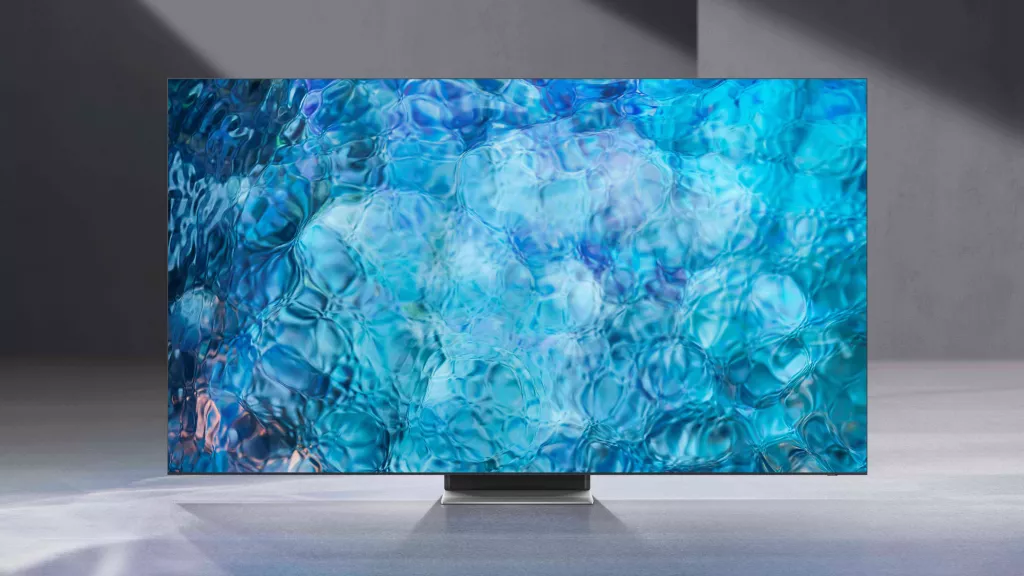High Speed TV
It’s not just that your kids are sucking up bandwidth with games or other bandwidth hungry applications or that your wife is watching “Bridgeton” on her smartphone, but your router must also contend with any others that are within range, including your neighbor’s router, which is also contending for access to Wi-Fi 6 channels. They are not ‘stealing’ your Verizon (VZ) or Optimum (ATUS) bandwidth, but on a technical basis both you and your neighbor are vying for the same Wi-Fi channels, which are limited in size. If the demand for Wi-Fi bandwidth exceeds what a channel can provide, someone gets dropped and the disc starts spinning.
Wi-Fi 6 uses two frequency bands, 2.4GHz and 5GHz, and while like 5G spectrum, the 2.4GHz band is able to reach further but is slower, while the 5.0 GHz band is faster but has a smaller reach. In theory the Wi-Fi 6 specs allow a maximum speed of 9.6GHz in either band, but on a practical level that is commonly closer to 1Ghz. to 2Ghz. This limits the total bandwidth that can be accessed by your router, even if it is one of the relatively new Wi-Fi 6 routers, but the FCC actually did something right last year and allocated another band, 6GHz to what is called Wi-Fi 6E to give a bit more bandwidth to users. In fact, the new band actually quadruples the bandwidth available to Wi-Fi, so there will be less contention for full speed data transfer requests, but there is a catch. In order to utilize Wi-Fi 6e, as the new version is called, you need to buy another router…
After a while buying new routers to take advantage of higher potential Wi-Fi speeds can get expensive and a bit frustrating, however Samsung (005930.KS) has come to the rescue. The company has joined up with Mediatek (2454.TT) who is providing its MT7921 AU chipset to Samsung’s 8K QLED TV line which, as of yesterday, now includes the ability to receive Wi-Fi 6E signals. While this doesn’t sound like much, the addition of the 6GHz spectrum opens up the equivalent of 28 80Mhz wide channels that will ease the contention that many Wi-Fi systems work under and increase realized data speeds.
As with all technology there are ‘catches’. Again similar to 5G (mmWave vs Sub6) as the frequency of the usage band increases, it has a lesser broadcast reach and can more easily be blocked by obstructions such as thick walls or floors. In order to compensate for these limitations, the ‘newest’ routers (which you will have to buy to use the WiFi 6E Samsung TV) can ‘meld’ low and high bandwidth when blockages occur, and as a portion of the 6Mhz spectrum is still reserved for licensed users, you cannot use your Wi-Fi 6E bandwidth outside, as you might interfere with the traffic of a licensee.
All in, the adoption of Wi-Fi 6E in a TV set is a good thing and one that will likely become common within the next year, at least for high-end TVs, but will be preceded by replacing current Wi-Fi 5 or even Wi-Fi 6 routers with those that are compatible with Wi-Fi 6e, and those are in short supply currently. Samsung seems to be looking a bit ahead, but being first to be certified “6e” is a big deal in the CE marketing game. No mention as to whether there would be any change in price (not likely) as the chipset remains the same, but the Samsung QN800A (8K) series sells for between $3,500 and $6,500, while the QN900A (8K) series sells for between $5,000 and $9,000 depending on screen size.

 RSS Feed
RSS Feed